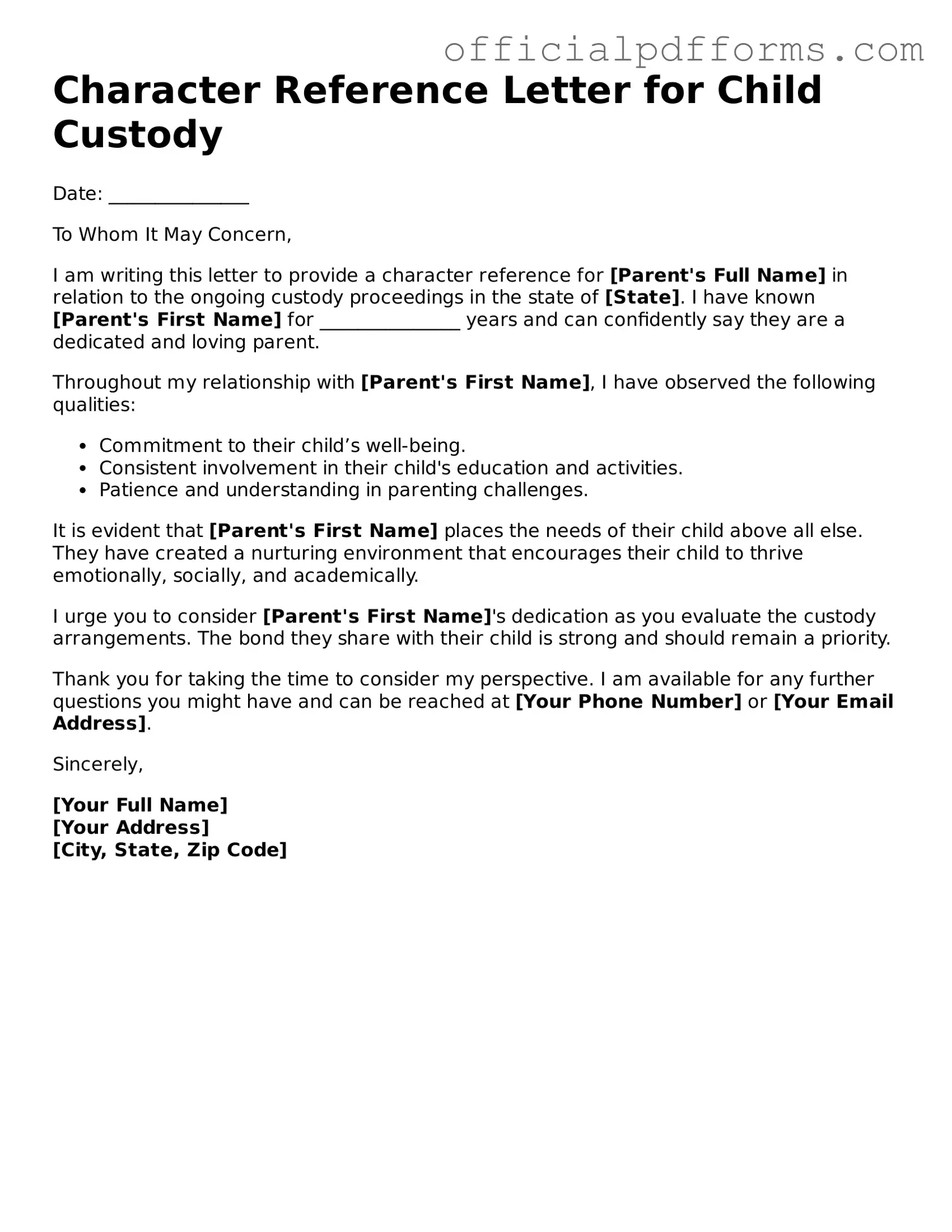What is a Character Reference Letter for Child Custody?
A Character Reference Letter for Child Custody is a document that provides insight into a parent's character, parenting abilities, and overall suitability for custody. This letter is typically written by someone who knows the parent well, such as a family member, friend, or colleague. The goal is to support the parent's case in a custody dispute by highlighting their positive traits and parenting skills.
Who should write the letter?
The letter should be written by individuals who have a strong understanding of the parent's character and parenting abilities. Ideal writers include:
-
Family members
-
Close friends
-
Teachers or coaches
-
Childcare providers
-
Community leaders
These individuals can provide a personal perspective on the parent's relationship with the child and their overall character.
What should be included in the letter?
A well-crafted letter should include the following elements:
-
A brief introduction of the writer, including their relationship to the parent.
-
An overview of the writer's qualifications or experiences that lend credibility to their opinion.
-
Specific examples of the parent's positive qualities, such as nurturing behavior, responsibility, and involvement in the child's life.
-
A conclusion that summarizes the writer's support for the parent in the custody case.
How long should the letter be?
The letter should be concise yet informative. Typically, one page is sufficient. It should provide enough detail to be persuasive without overwhelming the reader with unnecessary information.
While there is no strict format, the letter should generally follow a professional structure. This includes:
-
Date
-
Recipient's name and address (if known)
-
Salutation (e.g., "Dear [Recipient's Name]")
-
Body of the letter
-
Closing statement and signature
Using a clear and legible font is also advisable.
Can the letter be handwritten?
While a handwritten letter can add a personal touch, it is generally recommended to type the letter. A typed letter appears more professional and is easier to read. If handwriting is preferred, ensure that it is legible and neat.
Should the letter be notarized?
Notarization is not typically required for a Character Reference Letter for Child Custody. However, if the court specifically requests it, then the letter should be notarized. This adds a level of authenticity but is not standard practice.
How should the letter be submitted?
The submission method depends on the court's requirements. The letter can often be submitted as part of a larger custody filing. It's important to follow any specific instructions provided by the court regarding submission formats or deadlines.
Can multiple letters be submitted?
Yes, submitting multiple character reference letters can strengthen a custody case. Each letter should come from different individuals to provide a well-rounded perspective on the parent's character and parenting abilities. Ensure that each letter is unique and provides distinct insights.
If a writer feels compelled to include negative information, it is crucial to approach the matter delicately. Negative aspects should be framed constructively, focusing on potential improvements or changes the parent has made. However, it is generally advisable to emphasize positive traits and behaviors to support the parent's case.
